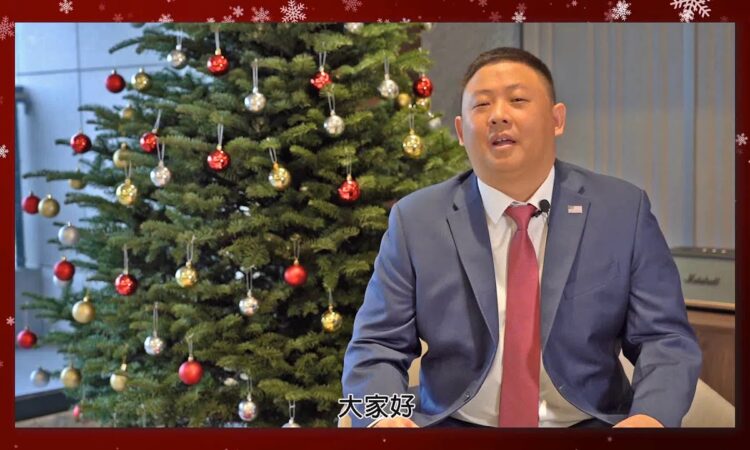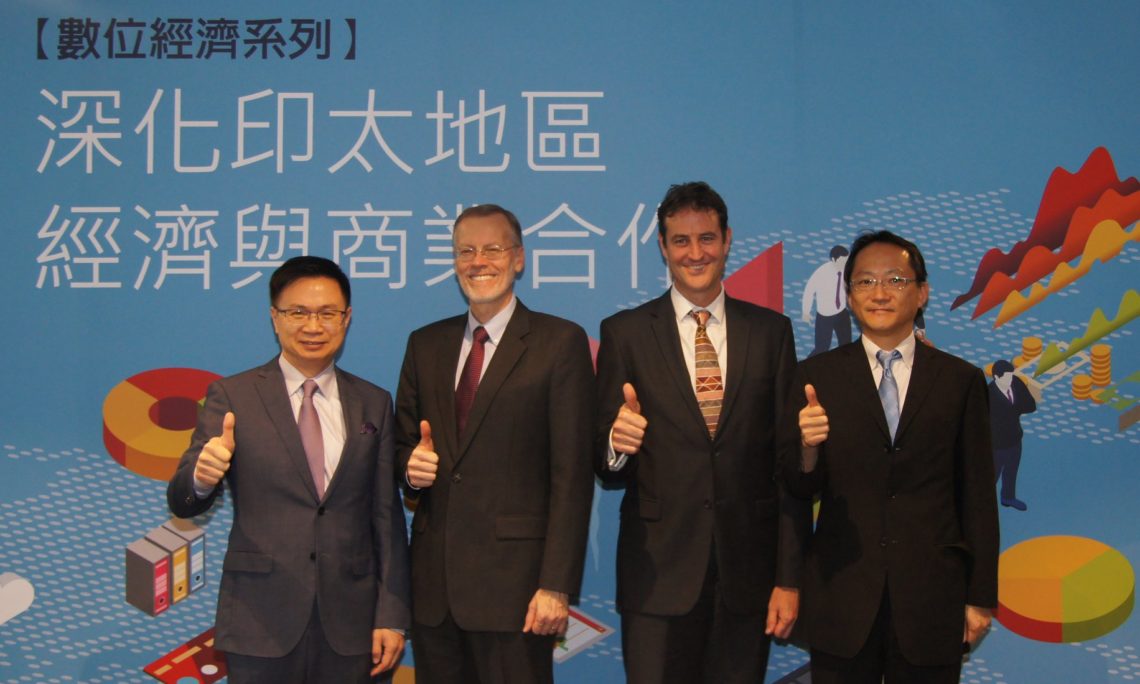OT-1941
June 18, 2019
Minister Deng, Chairman Huang, Representative Cowan, Ambassador Olkeriil, Ambassador Waleanisia, Deputy Representative Nishiumi, distinguished guests, ladies and gentlemen, good afternoon!
As many of you know, this year is the 40th Anniversary of the Taiwan Relations Act. To mark the occasion, over the course of this year, I will be giving a series of major policy addresses outlining our top four priorities for the U.S.-Taiwan relationship. Today, I would like to specifically address our vision for expanding economic and commercial ties between the United States and Taiwan, and also the broader Indo-Pacific.
Defending the Rules-Based Order
Over the last seven decades, the United States has promoted a free and open Indo-Pacific region in which independent nations and economies with diverse cultures and different aspirations can prosper side-by-side in freedom and in peace. As Secretary Pompeo underscored last July, “Where America goes, we seek partnership, not domination.” While the name of U.S. policy towards the Indo-Pacific may change from administration to administration, this fundamental principle remains forever constant.
It is no exaggeration to say that the economic and security environment the United States has helped provide the Indo-Pacific region has underwritten the most spectacular rise the world has ever seen. Out of the ashes of World War II, billions have seen living standards rapidly rise, democracy flourish, and peace prevail. Asia’s rise comes as a natural outgrowth of regional security, open seas, and mutually agreed upon economic rules. In short, the bedrock of the Asian economic miracle has been the establishment and protection of a rules-based order.
Over the last ten years, however, the basic integrity of the rules-based order has been called into question because – frankly – China has refused to respect and comply with the rules and standards of the international system.
The bottom line is this: if international rules are not enforced, they become meaningless, and that is by far the biggest threat to the entire system. U.S. actions are a defense of the rules-based order. Once this is understood, then the United States’ approach to the Indo-Pacific Strategy becomes clear.
A Free and Open Indo-Pacific
Our vision is for a free and open Indo-Pacific. “Free” means every nation is free from external coercion. Every nation should have the freedom to determine its own path and its own destiny. “Open” means open markets and open societies. History shows freedom and openness are like a magic elixir for prosperity and peace. It is no coincidence that almost all of the world’s most prosperous countries combine free markets with democratic participation. We each hold a piece of the puzzle, and it is by interacting together in freedom that this can all be harnessed into the collective wisdom of a free society.
It is this spirit that defines the United States’ Indo-Pacific strategy. Our policy has three interlocking pillars: security, good governance, and economic prosperity. In terms of security, our aim is to build a flexible, resilient network of security partners to promote regional stability, ensure freedom of navigation, and address shared threats, including in cyberspace. We also feel it is critical to improve good governance practices to underpin both the security and the economic efforts. Therefore, we will continue to promote transparency, openness, the rule of law, and the protection of human rights and fundamental freedoms. Security enables a society to focus on peaceful pursuits. Good governance places the rule of law above the rule of power. And in this fertile ground, economic prosperity naturally grows.
I would like to make one point crystal clear: Our vision for the Indo-Pacific excludes no nation. We invite all countries to join those who cherish a free and open Indo-Pacific. The United States believes that an inclusive approach embracing freedom and openness, and the power of private sector-led innovation, will lead to the most benefits for the most people, in the most transparent and beneficial manner possible.
Understanding U.S.-China Trade Tensions
We cannot discuss expanding economic and commercial ties in the Indo-Pacific without touching on the ongoing trade friction between the United States and China, which inevitably will have an impact on Taiwan’s economy.
The United States has serious concerns about China’s market-distorting subsidies, theft of intellectual property, and lack of market-oriented approach. In many ways, technology is at the core of our disagreements with China. As we all know, China has laid out an ambitious plan to dominate ten foundational technologies of the future, such as autonomous vehicles, robotics, artificial intelligence, quantum computing, and the internet of things. As noted in extensive detail in reports by the United States Trade Representative, China is concentrating its market-distorting practices on gaining an edge in these areas.
The U.S.-China Economic and Security Review Commission stated in its report to Congress, and I quote: “Industries like computing, robotics, and biotechnology are pillars of U.S. economic competitiveness. … But the Chinese government has laid out a comprehensive, whole-of-government plan to close the gap and achieve dominance in these areas. … The loss of global leadership in these future drivers of global growth, innovation, and warfare would be detrimental to U.S. long-term economic and military competitiveness.”
Since the trade dispute has begun, we have seen a growing shift in global supply chains out of China and into India, Southeast Asia, the United States, and also Taiwan. Close to $10 billion in investment, mostly in technology, has come to Taiwan alone. And it is not just due to our tariffs – more and more foreign companies are concluding China is no longer a favorable environment for their investments.
U.S.-Taiwan Economic Relationship has Never Been Stronger
Which brings us back to Taiwan and its relationship with the United States. In many ways, the U.S.-Taiwan economic relationship has never been stronger.
Taiwan is our 11th largest trading partner, and the United States is Taiwan’s second largest. This means the United States does almost as much trade with an island of 23 million people as it does with all of India. On a per capita basis, Taiwan consumes more American agricultural products than any other economy outside of North America. A very common perception is that Taiwan’s economy is stuck, while China’s is flying high. The truth is China is entering a very predictable slowdown that happens as you move into middle-income status, which is what Taiwan has dealt with for twenty years. But Taiwan’s economic numbers are actually quite good. It has the 14th highest per capita GDP of any economy in the world, higher than that of its neighbors and a number of Western countries.
Investment between the United States and Taiwan is robust. The total stock of two-way investment is $25 billion. It is not difficult to understand why companies are so committed to this market. It is because Taiwan is a trusted partner. When firms invest here, they feel confident that their intellectual property is safe, that trade secret protections will be enforced, that courts will adhere to the rule of law, and that the authorities are committed to shared democratic and free market values. As a result, many major U.S. technology firms are substantially increasing their investments in Taiwan. And the investment goes both ways. I just returned from the Select USA Investment Summit in Washington, D.C. For the last two years, Taiwan has delivered the largest delegation at the summit. As supply chains shift, more Taiwan investment is moving to the United States, planting the seeds for decades of continued close economic cooperation.
Looking beyond trade and investment for just a moment, it is important to emphasize that the United States’ economic cooperation with Taiwan naturally encompasses an impressive array of fields. Our job at AIT is to identify areas for collaboration, cultivate them, and use the outcomes to promote our mutual benefit. Through the International Environmental Partnership, for example, the United States and Taiwan have been working with regional partners to strengthen regional air quality monitoring and expand mercury monitoring, among many other projects. Scientists from our centers for disease control are collaborating to improve regional resilience against disease. And a new generation of advanced weather satellites developed jointly by the United States and Taiwan will launch from Florida’s Cape Canaveral on June 24th.
And the international acclaim achieved by Taiwan’s next generation of engineers continues to prove why Taiwan is such great place to do business. Taiwan’s engineering students have been “crushing it” – I believe that is the term – when it comes to international hackathons. Taiwan won the global fishhackathon. They won the NASA hackathon. And they came in second place in the DEFCON Capture the Flag competition, which is the Super Bowl of hacking competitions. Taiwan’s success in these global competitions helps create a draw that has enticed U.S. technology firms to set up Artificial Intelligence research and development labs here.
Taiwan’s Role in a Free and Open Indo-Pacific
Taiwan’s spirit of innovation, its strong collaborations with the United States in business, academia, and across scientific fields, are a model for the kind of partnership the United States seeks with other partners in the region. If we take a closer look at the Indo-Pacific pillars, we can see how joint efforts by the United States and Taiwan are fostering an Indo-Pacific region that is open to investment, where trade is fair and reciprocal, with regional ties driven by improved connectivity. Our vision has three explicit economic goals – all three of which directly tie into our relationship with Taiwan.
The first goal is energy security. A vibrant economy depends upon stable access to energy supplies. Wide-scale adoption of renewable and clean energy is the only long-term solution to preserving the world’s environment and sustaining humanity’s place within it. But we must also be realistic: energy needs are growing faster than renewables are able to come on-line. If there is no 100 percent substitute for fossil fuels, then it is far better to use relatively cleaner ones. Due to technological advancements, vast reservoirs of liquid natural gas are now accessible in the United States, allowing us to become one of the largest exporters of this cleaner energy to the world. The United States is working closely with our Taiwan partners to make U.S. energy available to power Taiwan’s industry and homes, with more than $20 billion in contracts signed over the last few years. At the same time, our technology companies are working together to develop renewable sources of energy and sustainable smart cities. These technologies are the best hope for both continued economic growth and a clean environment.
The second goal is infrastructure development. The Asian Development Bank estimated that the countries of the Indo-Pacific will require $26 trillion of infrastructure by 2030 to reach their full economic potential. To support greater infrastructure development, last year the U.S. Congress passed the Build Act, which establishes a new U.S. International Development Finance Corporation that doubles U.S. development finance capacity to $60 billion. The U.S. Overseas Private Investment Corporation (OPIC) and Taiwan are together eyeing expanded cooperation that will make us closer partners as we build the infrastructure of the 21st century. A free market, private sector led infrastructure strategy ensures that projects built are economically sustainable. This approach stands in sharp contrast to state-led financing efforts, most notably by China, that promise big, but deliver less, exacerbating debt burdens and exposing host countries to other risks.
The United States is particularly focused on the development of 5G network infrastructure. 5G is not just about telecommunications equipment and the software that powers it, but is rather the foundation for every transformational technology of the future, including autonomous vehicles, industrial robots, artificial intelligence, and the internet of things. As everyone knows, the United States and our like-minded partners have grave concerns about the use of Chinese-made telecommunications equipment, software, and services. Taiwan has been aware of these risks for many years, having banned Chinese-made telecommunications equipment from its infrastructure more than five years ago. It is only now that the rest of the world is beginning to follow Taiwan’s wise example.
And the third priority is the digital economy. For decades, Taiwan has been a critical link in global technology supply chains. Taiwan is home to some of the world’s most advanced semiconductor and electronic component manufacturers, a deep pool of world-class engineers, highly adaptive technology support services, and innovative startups. Four years ago the United States and Taiwan launched the Digital Economy Forum to bring the U.S.-Taiwan economic relationship into the digital age. Under the DEF’s Small and Medium Enterprise Work Plan, the United States and Taiwan have rapidly increased cooperation among our innovative startups, in particular for women entrepreneurs. Through these efforts and Taiwan’s 5+2 Innovative Industries plan, Taiwan is rapidly making the transition to an innovation-based economy. The rest of the world has taken note. The World Economic Forum concluded last year that Taiwan has emerged as one of the world’s four “super-innovators.”
The Future of the U.S.-Taiwan Economic Relationship
On this solid foundation, I am very optimistic about the future of the U.S.-Taiwan relationship. Our shared values are more than just principles we both hold. They represent a common culture of free societies that binds us together in a way that transcends ethnicity or even history. Taiwan will always have a home in the community of democracies, and it can count on the United States’ unwavering commitment to our future together. Taiwan’s shining example clearly demonstrates that it is possible to be both Chinese and democratic.
For the United States and many other partners, supply chains may shift, but the protection of core democratic values must be constant. And it is upon this foundation of freedom that business, and our economies, will continue to prosper.
As we move forward, I want to highlight three immediate economic priorities: advancing discussions through the Trade and Investment Framework Agreement, expanding startup cooperation in Southeast Asia, and promoting the circulation of talent between Taiwan and like-minded partners.
First, the United States looks forward to advancing our economic relationship with Taiwan through the Trade and Investment Framework (TIFA) talks. Taiwan has proven to be an outstanding partner on many fronts, and year after year continues to improve its business and investment climate. However, Taiwan has yet to address longstanding U.S. concerns about beef and pork market access, which has an outsized effect on the overall trade relationship. If Taiwan can follow the science and resolve these long-standing irritants, it will open the way for new bilateral trade and investment opportunities in our economic relationship.
Second, we will expand our startup cooperation in Southeast Asia through a recently launched program called StartOpps. This is a joint effort between the State Department’s Office of Global Partnerships, USAID, the U.S. Small Business Administration, the U.S. Overseas Private Investment Corporation, multiple Taiwan ministries, and the private sector on both sides. StartOpps gives the United States and Taiwan a way to “go south together.” Taiwan is quickly emerging as a gateway into Southeast Asia, which has the fastest growing digital economy of anywhere in the world. Through StartOpps we hope to integrate the innovative startup ecosystems of the United States, Taiwan, and Southeast Asia while empowering entrepreneurs, and especially women entrepreneurs, everywhere.
Third, we are working closely to promote the circulation of talent between Taiwan and like-minded partners though the Talent Circulation Alliance. Much of Taiwan’s industry was established by young people going to study and work in the United States. These talented individuals then came back to Taiwan to found or work for some of Taiwan’s most successful global companies. The Talent Circulation Alliance seeks to recreate this story for the digital age. The answer to the challenge of brain drain is to promote brain circulation among like-minded economies. We intend to work together with the public and private sectors, academia, research labs, non-governmental organizations, and others to facilitate a steady flow of circulation of talent between like-minded economies. This circulation of talent between Taiwan and its like-minded partners will reinforce the connective tissue linking our economies with a free and open Indo-Pacific.
In closing, as the United States pursues its Indo-Pacific policy, we are not just interested in developing closer bilateral ties between the United States and other countries in the region. We also hope to encourage the development of a dense web of relations between all of our Indo-Pacific partners. Taiwan is an integral part of the Indo-Pacific community, and through platforms such as the Global Cooperation and Training Framework, we are helping to build links between Taiwan and the rest of the region to tackle global challenges such as bridging the digital divide, combatting disinformation, controlling the spread of infectious diseases, and empowering women.
It is for this reason that we have invited representatives from a variety of Indo-Pacific partners here today to share their views on how to weave their economic relationship with Taiwan into the fabric of the Indo-Pacific. Our shared message is clear: Taiwan is not alone. It is part of large family committed to the same shared values. Its future remains firmly anchored in a free and open Indo-Pacific.
It is also for this reason that today, after my speech, we will officially launch our second “Digital Dialogue” with the Taiwan general public. The Digital Dialogues take place through on-line tools engineered by Digital Minister Audrey Tang that combine artificial intelligence with the wisdom of the crowd to facilitate better policy-making. Our second Digital Dialogue asks the Taiwan public a very simple question: what are your ideas for how we can promote closer economic and commercial ties between the United States, Taiwan, and the larger Indo-Pacific? We encourage all of our media friends to spread the word about the Digital Dialogues. To participate, simply go to the AIT website and search for “Digital Dialogues.”
Taiwan is one of our most important economic partners in the Indo-Pacific region. I submit that it is only by working with Taiwan and all of our other like-minded partners who share a common vision of a free and open Indo-Pacific that we can make its promise a reality.
Thank you.


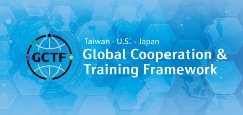




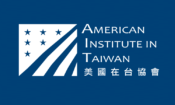
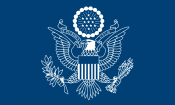
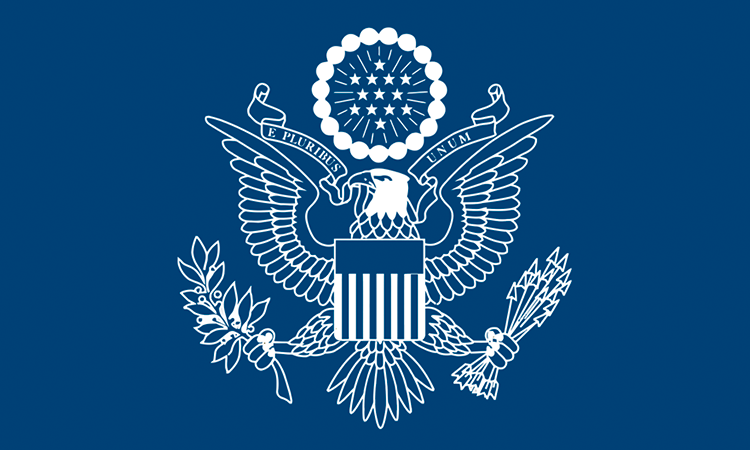





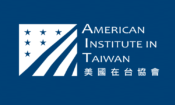
![Video Thumbnail [Recovered]-01](../wp-content/uploads/sites/269/Video-Thumbnail-Recovered-01-1-750x450.jpg)
